The Memorymoog – one of the legendary TOP FIVE vintage poly-synthesizers. On second thought, one of the TOP THREE. After all, the instrument differs from all its competitors in one certain aspect of its voice architecture. Because of this, the Moog Memorymoog is particularly musical, particularly expressive, with a particularly lively sound – something very special.
Sometimes problems just solve themselves
Spring 2021: I defy the risk and buy a Memorymoog. My intuition tells me “No! This particular Moog is one of the most vulnerable vintage poly synthesizers on the market!” That sense of forboding increases as soon as the Memorymoog – well-packaged by a trusted dealer we know from Spain – arrives. The instrument shows up the following quirk: Voice No. 4 is a whole tone too low. Auto-Tune can’t calibrate the voice, so the instrument can only be played to a limited extent. Said voice could be switched off, ok, but that would not solve the basic problem.
Scary stories about cumbersome Memorymoog tuning à la “… with the synthesizer folded up and a mirror mounted on the wall, read the hexadecimal values in reverse that are shown on the display, write them down, then convert them into Hertz …” cause more stormy clouds to gather. And opening the instrument leads to a hurricane-like state of mind. This “cobbled together” device, this jumble of boards, connectors and wiring harnesses is supposed to be one of the most famous vintage synthesizers? Really?
Eventually, the bad gut feeling disappears. Sometimes problems just solve themselves. The out-of-tune voice finds its way back to its intended calibration. And that by simply flipping up the voice boards, because, lo and behold, all voices are suddenly “in tune”. Our guess: Olympic parcel throwing during shipment led to an alteration of a voice board trim poti. Mechanically moving the board fixed everything! Since then, the Memorymoog has been running perfectly.
“4 TUNED”? No Problem …
The story of our Memorymoog is a personal story, of course. In our case, the following has been confirmed: Make your own picture of the instrument. The warnings and notes from the manual, from general literature and from the web do not necessarily apply. That’s just the way it is. Our Memorymoog shows 4 TUNED, 5 TUNED or (rarely) 6 TUNED depending on the day and its mood. 6 TUNED would be perfect, everything else indicates technical defects, according to literature. Not so our Memorymoog. Even with 4 TUNED, all 6 voices can be heard. It may be that the stored tolerance values ”report” erroneous voices to the Memorymoog system controller. The anomalies, in any case, cannot be heard. All 6 voices sound, the Memorymoog works perfectly.
Mysterious System Controller, noisy fan and more …
Although we are very enthusiastic about its characteristic sound and its performance possibilities, this report is not inteded to be a one-sided hymn of praise for the Memorymoog. So let’s start with a few “special” things. The SYSTEM CONTROLLER – from the point of view of the early 80s a great gimmick with a calculator panel and some mysterious command chains – makes programming a bit cumbersome. A few examples: Press Arpeggiator, then 4, then Enter – this is Arp Mode UP with hold function. Press Mono, then KB Mode, then 3 and Enter – this is Unison Mode with 3 voices, which means mono sound with 9 VCOs. Got it so far?
The System Controller is also used to lock / unlock the control panel, to enable storing sounds (press C 8 and Enter) – unless, in the unfortunate dim past, a 4-digit access code was entered, which is unknown to the present Memorymoog owner. Plus, the System Controller allows calling up the PANEL sound (press C 9 and Enter), stepping through the 100 patches (e.g. 82 and Enter, or A – next higher sound up or B – next lower sound down, no Enter required here), and determining program sequences, various system routines and calibration processes.
All very retro, with the technical charm of early digitalization. The central control elements, those gray and white plastic touch buttons, indicate that things were not going well for the Moog company in 1980. They work (they do work), but are difficult to press (where exactly is the pressure point?) and sometimes fail – if only for a short time – after the Memorymoog has not been used for a long period. Frequent pressing should then quickly resolve most of the contact problems of the individual buttons.
Let’s stay with the hardware. The panel is covered with a protective film (similar to the Oberheim Xpander / Matrix-12), which, after 40 years, often shows bumps, looks unclean and can evidence cracks in some places. The fan inside is also a small addity. Although by no means quiet, the fan, together with the large power supply and the radiator grille on the back, ensure that the Memorymoog runs stably. However, it also means that the weight of the instrument is strongly banked on one side. So if you innocently lift the Memorymoog without knowing what you’re doing, you may drop the instrument, since the left side is lopsidedly overweight.
A TOP Vintage Synth? Of course …
Now by this time, critical thoughts may have arisen as to our assessment of “a TOP vintage synthesizer”. How that, when there are more than just a handful of question marks regarding technical reliability, sluggish switches and other aspects of the hardware that have not been resolved? The answer is simple and not really new: the MEMORYMOOG SOUND is unique. While the instrument is often described as a (more or less) 6-voice Minimoog, our personal experience goes beyond that.
A brief history. The long-awaited, fully programmable / storable polyphonic Memorymoog (Model 345) – designed by Rich Walborn – appeared in the early 1980s, being introduced in the USA in 1981 and available in Europe before the end of 1982.
In addition to the Memorymoog, Rich Walborn designed, among others, the Moog Prodigy, Liberation, The Rogue, and Taurus II.
The Memorymoog PLUS followed from mid-1983 to 1985, coming with a MIDI update and built-in sequencer. Rudi Linhard’s comprehensive servicing and MIDI update known as Lintronics Advanced Memorymoog Modification (LAMM) has been gifting the world with that technically improved Memorymoog LAMM since the 1990s.
However, unlike the Minimoog – the undisputed number one mono synth (everyone loves the Minimoog, right?) – the reactions to the Memorymoog to date have been a little more nuanced. Three quotes from synthesizer literature…
Julian Colbeck:
“Everyone loves the Minimoog, but the Memorymoog has people divided. Quite strongly. There are users and aficionados who revere the instrument, who find it capable of extraordinary power yet subtlety and who […] continue to work with and use it on a regular basis. Then there are those who view Moog’s parting shot as having passed its sell-by date before its release: using old technology, scrapply put together and riddled with imperfections.”
(Julian Colbeck Keyfax Omnibus Edition, 1996, page 76)
Peter Forrest:
“The Memorymoog isn’t touch-sensitive in any way; it’s not multi-timbral, not even with a simple split / layer keyboard facility; only the later (1984 – ) Plus model has (a fairly basic) MIDI; it’s realiability is poor; compared with modern synths in many ways it’s a desaster; and yet it blows them all away for power and guts. Quite simply, it’s one of the great synthesisers of all time […] .”
(Peter Forrest The A-Z of Analogue Synthesisers, Part One: A-M revised, 1998, page 281)
Mark Jenkins:
“From 1980 to 1985, Moog introduced the synth that the Polymoog should have been: the Memorymoog had solved the voice assignment problem, finding a way to assign just six voices to the keyboard but making them much more powerful than the Polymoog voices. Even so, they were not exactly the equivalent of a polyphonic Minimoog; by this time, oscillators, filters and amplifiers designed from individual components had been replaced by facilities on a single chip […]. But the Memorymoog was again late, large, expensive and not very reliable […]. These factors, combined with the departure of Bob Moog some years earlier, started a decline for the company that ended with its closure in 1987.”
(Mark Jenkins Analog Synthesizers, 2007, page 59)
Memorymoog Features
The instrument is a classically designed analog synthesizer that can be technically characterized as a mixture of Minimoog and Prophet-5, plus some extra extras.
The Memorymoog has 6 voices, each with:
- 3 VCOs (CEM 3340) with Sync, VCO 3 switchable to LOW mode
- Moog-Ladder-Filter with ADSR envelope (CEM 3310)
- VCA (CEM 3360) with ADSR envelope (CEM 3310)
Further:
- Digital Noise (a pink-noise loop – strange)
- A comprehensive LFO compartment including Sample & Hold
- A comprehensive Voice Modulation compartment (mod sources: VCO 3 / VCF ENV)
Performance features include:
- Various monophonic / polyphonic Keyboard Modes
- Two assignable external CV Signals (Footpedal 1 / 2)
- A Chord function (referred to as HOLD)
- Pitch-Wheel (programmable)
- Modulations-Wheel and …
- … a separate Modulation Amount Knob
- -1 / 0 Octave Switches, Glide, Tune
- Arpeggiator with various modes
- Sequencer (MM Plus version only)
Connections include:
- Balanced Audio-Out
- Unbalanced Audio-Out
- Headphones-Out (front)
- Monophonic CV-Keyboard-Out (CV/Gate/S-Trig)
- 5 footswitch connections (incl. HOLD, which is Sustain in this case)
- Clock-IN for the arpeggiator
- Cassette-Interface
- MIDI (MM Plus version only)
Musical Characteristics
As can be expected from the feature lists above, Memorymoog comes with a whole range of special sound features. However, in accordance with our introductory thoughts, we would like to first point out the most notable feature of the Memorymoog …
3 VCO’s per voice
The Memorymoog offers – as does the Minimoog – 3 VCOs per voice. Not tooo spectacular at first glance. Is the difference between 2 and 3 oscillators really that big? Well, yes! First, with 3 VCOs you can tune chords. Second, all three waveforms (sawtooth / pulse / triangle) can be up and running simultaneously with each oscillator. Wow. This means 3×3 = 9 active waveforms per Memorymoog voice, 54 waveforms for 6 voices, or any number in between.
Now – and the Memorymoog is a real specialist here – the individual mix of the total of 18 VCOs is never exactly in tune! Ergo, combinations of VCO1/2, VCO1/3 and VCO2/3 create different beats per voice. Resulting in an impressive variety of slightly changing waveforms that are constantly being overlaid. Don’t look for any LFO-modulations you may think you hear – these are not activated. That lively sound results simply from the 3 VCOs per voice. And from their many simultaneously active waveforms.
Need clarification? Listen to soundfile “Short Solo 1” attached below: A solo sound with 3 VCOs per voice, each with pulse and triangle. No LFO is used, yet the solo sounds particularly natural, all the way from delicate to very lively. Sometimes the harder pulse sound predominates (accents emerge), sometimes it’s the triangle wave (softer passages can be heard), often the mix lies somewhere in between. All a result of those multiple beats between the many oscillators.
It’s also important which keyboard mode you select. The cyclic mode, polyphonic KB Mode 1 was used here: The 6 voices of the Memorymoog are called up one after the other and so maximum liveliness takes place. In other KB modes other musical effects can be achieved. There are 4 polyphonic and 3 monophonic KEYBOARD MODES. All modes have interesting uses, especially when used in conjunction with the SINGLE/MULTIPLE TRIGGER switch and/or when the Memorymoog is interfaced with a monophonic synthesizer.
In summary: The rich selection of keyboard modes and the existence of 3 VCOs per voice – or any selection of 1 to 18 VCOs in total – with the possibility of activating all waveforms at the same time, have together ensured the Memorymoog a unique place in synth history.
Audio-Mixer and VCF: warm tonal character
As with the Minimoog, the basic sound of the Memorymoog becomes frayed. The audio overdrives permanently, the sound is not straight-edged, but worn, like the ends of a patchwork rug. What may be a bit unusual at first (owners of the technically near-to-perfect Roland vintage synthesizers may not be familiar with this phenomenon), but after only a short period of familiarization this sound evolves to something more pleasant, a bit rougher, extremely warm and very special.
If you prefer a rather straight – a bit boring – Memorymoog sound: You can almost completely eliminate said “fraying” in the MIXER section by lowering the individual VCO volumes to less than a third (!). However, the MASTER VOLUME level must then be increased accordingly, which significantly increases the background noise in the Memorymoog’s audio path.
There is not much to be said about the famous Moog ladder-filter. It works very effectively and its resonance behavior is inspiring. High EMPHASIS values bring out a whole array of harsh-sounding but warm tones. Surprise, surprise: The Memorymoog not only can sound (as is the prevailing opinion) powerful, loud, evil, dominant, but also has a wide range of subtle, delicate, even dainty sounds up its sleeve. This, in addition to the lively VCOs mentioned above (with all waveform mixes and those constantly changing timbres), is the second mainstay of the Memorymoog sound.
LFO Modulation, VOICE Modulation and VCO 3 in LOW Frequ Mode
After the release of the Sequential Prophet-5 in 1978, Moog had no choice but to equip its Memorymoog with modulation options similar to the Prophet. Above and beyond that, Moog added a few details to both the LFO- and the VOICE-modulation departments. In detail: The LFO comes with Sample & Hold, and the VOICE-modulation (sources: VCO 3 and VCF envelope) features CONTOURED VCO 3 AMOUNT and an INVERT switch.
In addition, VCO 3 can be used in LOW mode as the second LFO. Memorymoog has the advantage that a robust sound body with 2 VCOs remains even if 2 LFOs are in use – unlike the Prophet-5, which has only 1 VCO left after switching the other to LFO-mode. Evidence of the superiority of the Memorymoog 3-VCO-per-voice architecture.
Flexible Voice-/Keyboard-/Trigger-Modes, heaps of Inputs/Outputs
We have already mentioned the flexible monophonic and polyphonic modes. Usefully, the musician can specify whether a unison sound has one VCO only (Osc 2 / Osc 3 are then set to “0” in the mixer section), 3 VCOs à la Minimoog (one MM voice active), or 6 / 9 / 12 / 15 / 18 VCOs (six MM voices active). There are also different voice assignment modes and single/multiple triggering. MULTIPLE TRIGGERING is great for playing those pyrotechnic runs where you want every note to be an exclamation mark! And it covers up those few notes you might hit sloppily, whereas SINGLE TRIGGERING requires you to hit every note distinctly in order for it to be articulated clearly.
Inputs and outputs of the instrument are just as luxurious as all the rest. FOOTPEDAL 1 and FOOTPEDAL 2 deserve special mention. CV pedals do not necessarily have to be used, any analog CV voltages will do. Handy: The control voltages can be directly switched on / off on the control panel, and their modulation intensity adjusted. Pedal input 1 goes straight to PITCH, VOLUME and FILTER, depending on activation, pedal input 2 to MOD AMT (and everything behind that, with reference to the generous modulation department) and to OSC 2 (CV-to-Sync).
If only one pedal is connected, the voltage is automatically passed on from PEDAL 1 to PEDAL 2, which means that “all” modulation targets can be controlled with the same pedal / CV source: Another (external) LFO, an analog sequencer, or a theremin with CV-Out etc. Another illustartion of the well thought-out Memorymoog design.
External control of an analog synthesizer solo voice (e.g. The Rogue, if we stay with Moog) is also provided. And this, too, comes with a wide range of options. The CV voltage output can be adjusted according to the playing style / musical requirements using HIGH / LOW / LAST Note Priority. And it can be precisely adjusted to the external synthesizer via trim pots (range / scale). Finally, the external solo voice in question can be switched on / off from the panel (!) via KB OUT. In this way, the musician can spontaneously decide when the additional (external) synthesizer voice is to be added and when not. Another chance for creativity!
Precise keyboard action, programmable controllers
and an excellent display concept
Although the Memorymoog keyboard is in no way velocity-sensitive, we still prefer to describe it as outstanding (considering the Memorymoog was released in 1982), for the simple reason that it reacts immediately and precisely. This immediacy is quickly explained: Only about 1 (!) millimeter of key depth is required to trigger the sound.
With such quick reaction, the musician can effortlessly elicit brisk and funky solos. No rattling, no extra push, this keyboard definitely qualifies as a special tool for a wide range of musical expression. A far cry from those clunky Oberheim OB-X/-Xa keyboards, a far cry from the woodchopper keyboard of an ARP Quadra or PPG Wave, the Memorymoog keyboard underscores just how much this synthesizer was designed to be user-friendly and performance-oriented.
Pitchbender and modulation wheel also earn praise and recognition. Pitch bend range can be set precisely (and saved individually with each sound), and the modulation wheel reacts independently of the extra MOD AMOUNT control (as with the Oberheim OB-8). As mentioned above, all modulation movements can themselves be controlled via FOOTPEDAL 2.
In addition, there is that small 2-part display that shows the original stored value on the left when changing parameters, while the new value can be seen on the right – which in turn enables very precise, finely graduated sound programming. The cherry on the sundae is the slanted Memorymoog panel, which ensures an excellent overview / insight / supervision of all controls.
All in all – we come to that summary you’ve been waiting for – the Memorymoog is a musical instrument perfectly concepted for the performance artist and sound designer. A veteran with every imagible comfort promising outstanding results.
Memorymoog, Memorymoog Plus and LAMM …
The original Memorymoog was sorely missing one thing: MIDI. There are now retrofit kits, such as those from Kenton Electronics, to remedy this. And the Memorymoog Plus comes equipped with MIDI. Then there’s the legendary Lintronics Advanced Memorymoog Modification (LAMM) which is (theoretically) the crowning glory of the Memorymoog. That LAMM package comes with various extras (stereo outputs, the option to assign voices to right/left, new displays, etc.).
It makes no sense to make recommendations for this or that choice. Everyone must decide for himself whether a Memorymoog fits into his setup (or not), and, if yes, which model is the right one. Our choice fell on the early version of the Memorymoog. A plunge into the unknown with happy results. Personally, we are somewhat critical of the legendary LAMM. As so often in synth-history, here too, a decisive upgrade of the original Memorymoog may mean a change in the character of the instrument. Certainly a change for the better, from a technical point of view, but there is still no question you risk losing some nuances of the boisterous, untamed, wild original Memorymoog sound.
Conclusion
The Memorymoog sound and the reliability of the instrument has suprised us. Essentially, the instrument is more flexible than most comparable competitors, despite it’s having only 6 voices. And its lively, musical character is contagious. But we’ve also had to content with sluggish keys, a noisy fan and the chaotic hotchpotch of its inner parts.
It’s all about SOUND! On the positive side, a Memorymoog is not a polyphonic Minimoog. This would hardly be possible with the generous arsenal of CEM chips. And again, the Memorymoog is much more than its famous monophonic ancestor. It can sound moogish, but on the contrary it can also sound un-moogish. It is the subtlety of the sounds that particularly inspires us. That liveliness, that phasing, that quasi-modulating of the waveforms – without a modulator, simply through beats and several active waveforms per oscillator – that emits an irresistible charm.
This all paired with the colorful filter sound, with the impressive LFO / VOICE modulations, with the numerous and musically meaningful voice / keyboard modes and with its range of performance options (including the original keyboard, which is excellent to play), the Memorymoog is a TOP Vintage Poly-Synthesizer, unrivaled both in the past and in the present.
Several questions as to technology and hardware are not to be denied. But – new thought! – maybe the Memorymoog’s characterful sound is also the result of its many shortcomings, of the imperfect construction of the instrument. Maybe the one causes the other.
x
Which leads to the inevitable assertion that comparing the Memorymoog with the new Moog ONE doesn’t make sense. Modern components, circuits and manufacturing processes inevitably lead to a different aesthetic of analog sound, to, in essence, a modern quality. This phenomenon is apparent – to be seen and to be heard – in all synthesizers built as remakes of well-known vintage classics: ARP 2600 FS, Moog ONE, Prophet-5 Rev. 4, OB-X8, …
Back to our Memorymoog. Anno 2023, the used market value of the instrument has stabilized at between 10,000 and 15,000 Euros/USD, which corresponds to the current hype on rare vintage synthesizers. It is difficult to say whether one should risk such a large investment in the face of quite legitimate unresolved technical questions accociated. It’s definitely a dive into the deep end.
x
We took the plunge. And were not disappointed.
x
40 minutes of sound samples are attached. An original Memorymoog can be heard for the most part, as well as a Memorymoog LAMM in 4 sound files (sound samples by O.H.). Occasional background events contribute Elka Synthex (with phaser), Roland Juno-60, COTK System 55 as well as the Yamaha CS-60 and Yamaha CP-70B Electric Grand Piano.
Moog Memorymoog
Polyphonic Analog Synthesizer with 6 Voices à 3 VCOs,
VOICE Modulation, Arpeggiator and Sequencer / MIDI (Plus Version)
x
Memorymoog Demo by SynthMania (2015):
Memorymoog Presets, Sounds & Patches by Synth4ever (2018):
Memorymoog Demo by Dr. Mix (2019):
Open / Download:
Moog Memorymoog Front I (4000 x 2400px)
Moog Memorymoog Front II (4000 x 2400px)
Moog Memorymoog Back (4000 x 2400px)
Links:
Lintronics Advanced Memorymoog Modification (LAMM)
Kenton Memorymoog MIDI Interface
Vintage Synth Explorer
Comparison:
Oberheim OB-8 review
Sequential Prophet-5 review
Yamaha CS-50/60/80 review
Roland Jupiter-8 review
Elka Synthex review
Baloran THE RIVER – an elemental SOUND force
(still one of the very few modern analog synths with vintage sound)









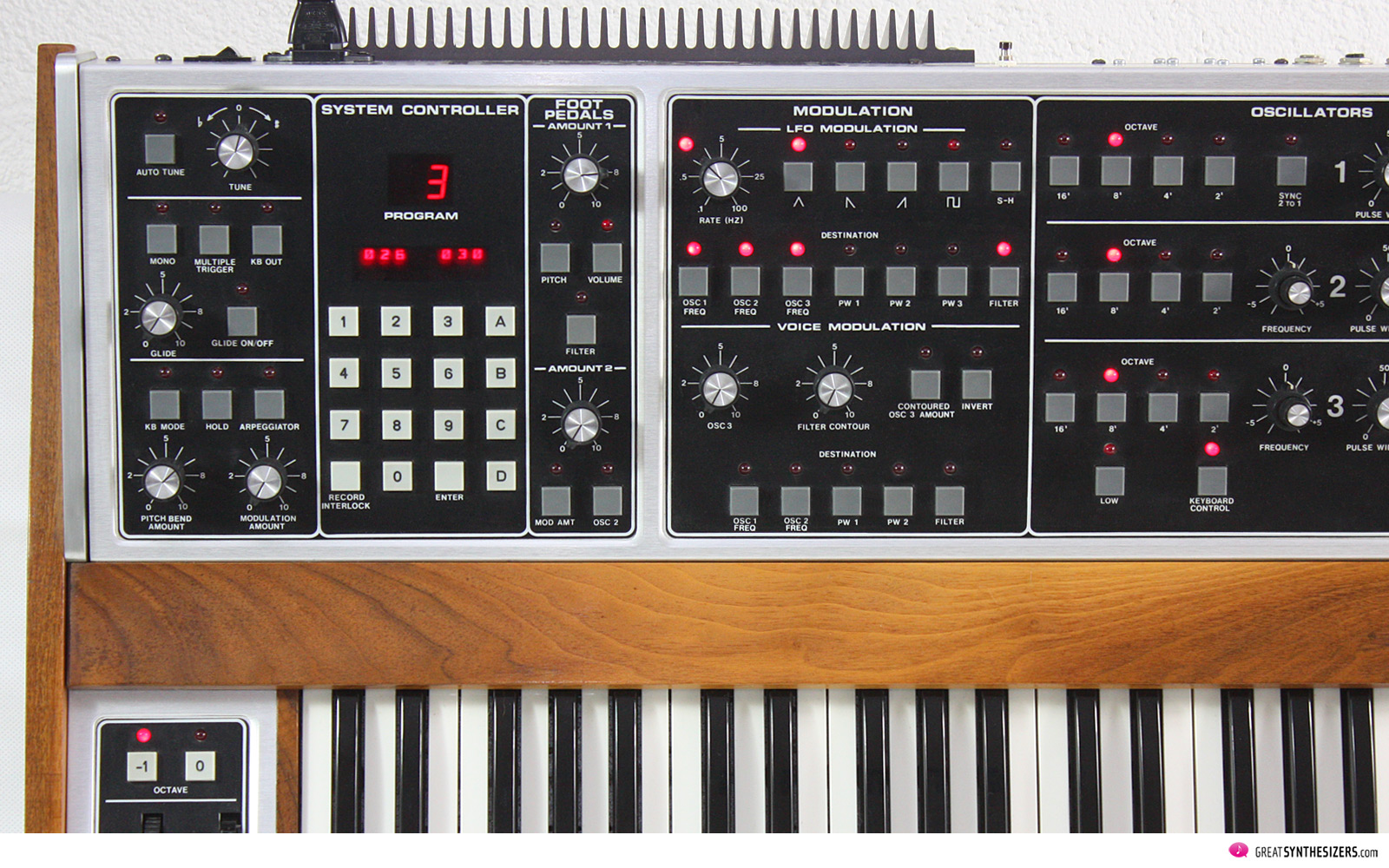
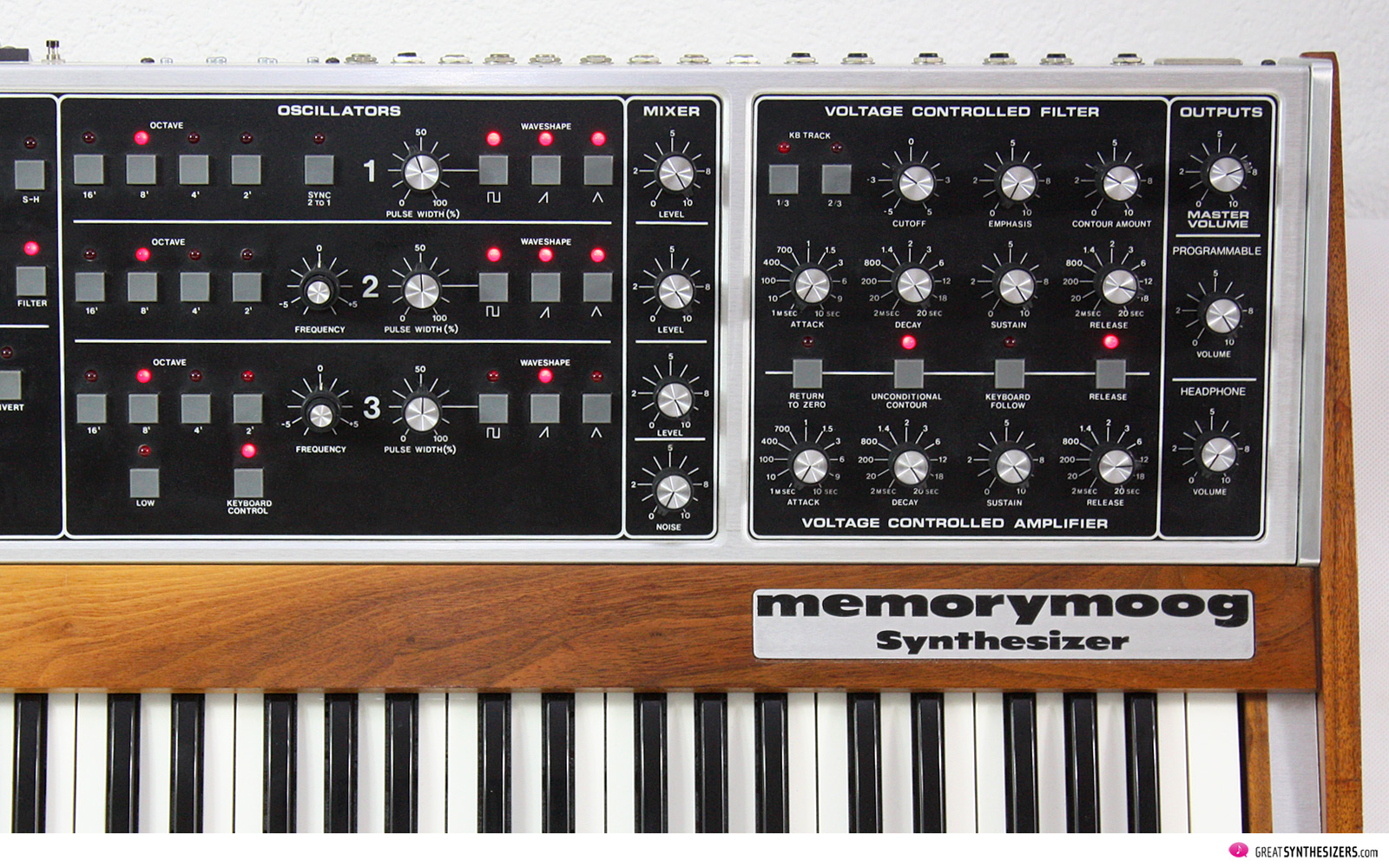

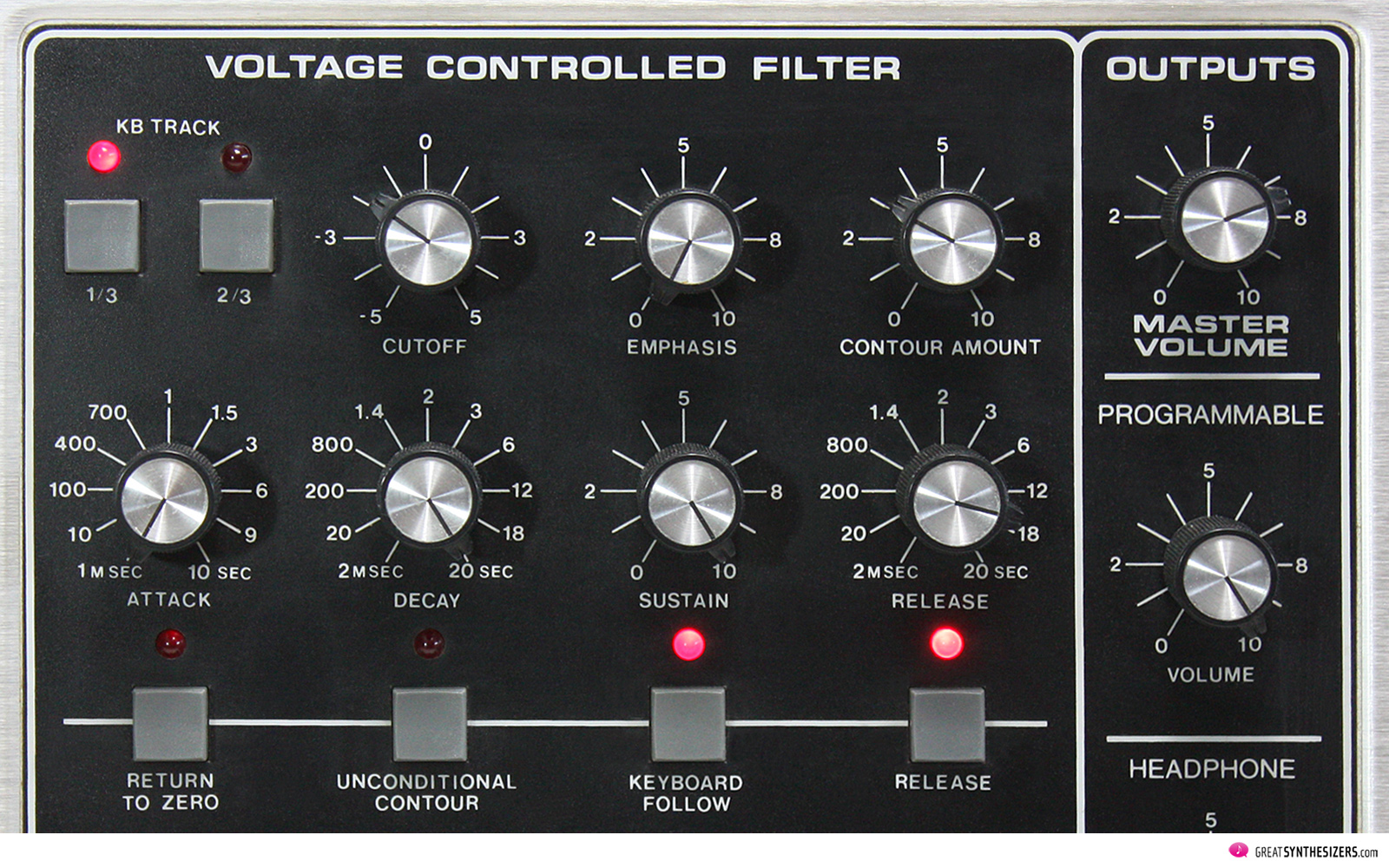





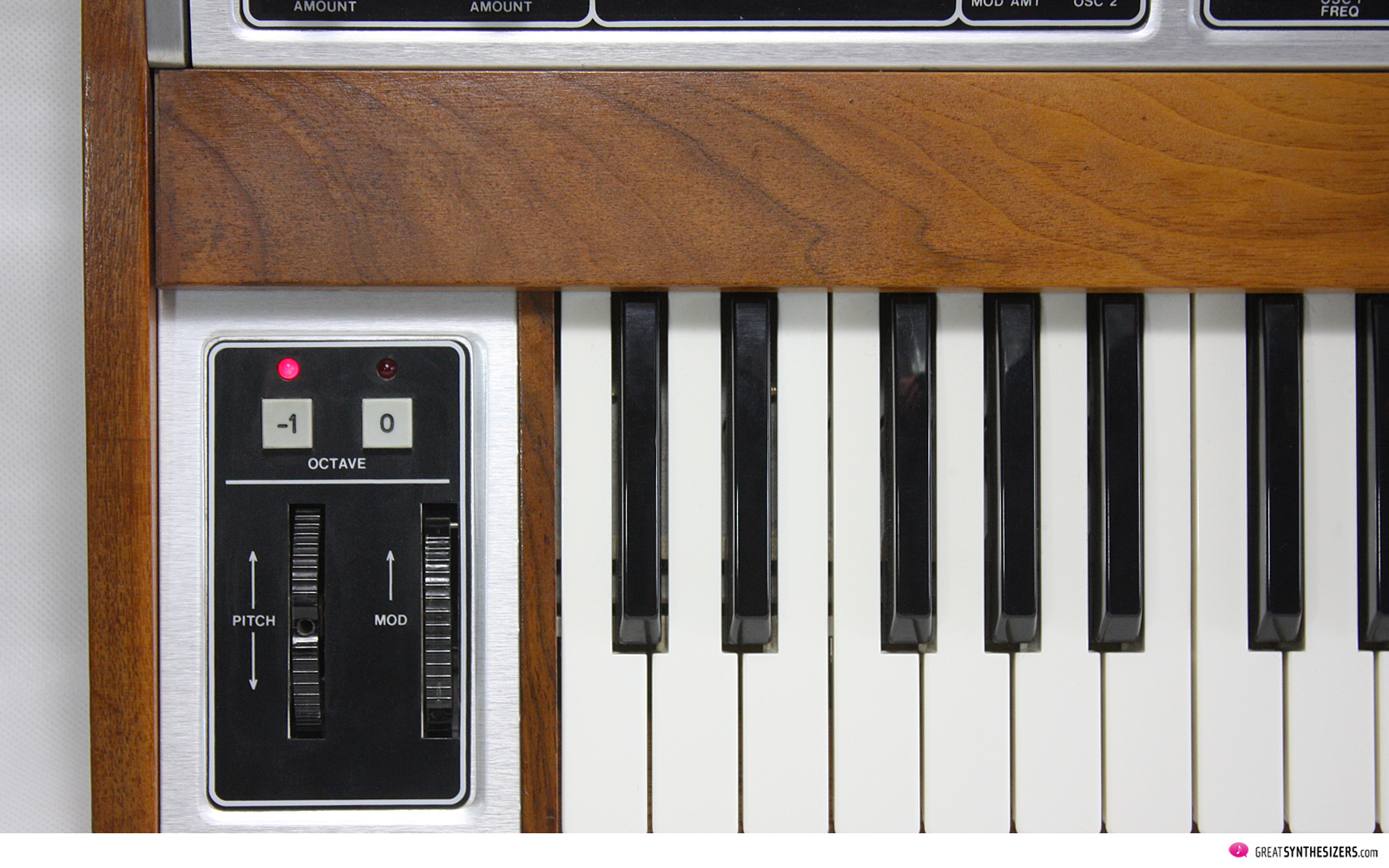
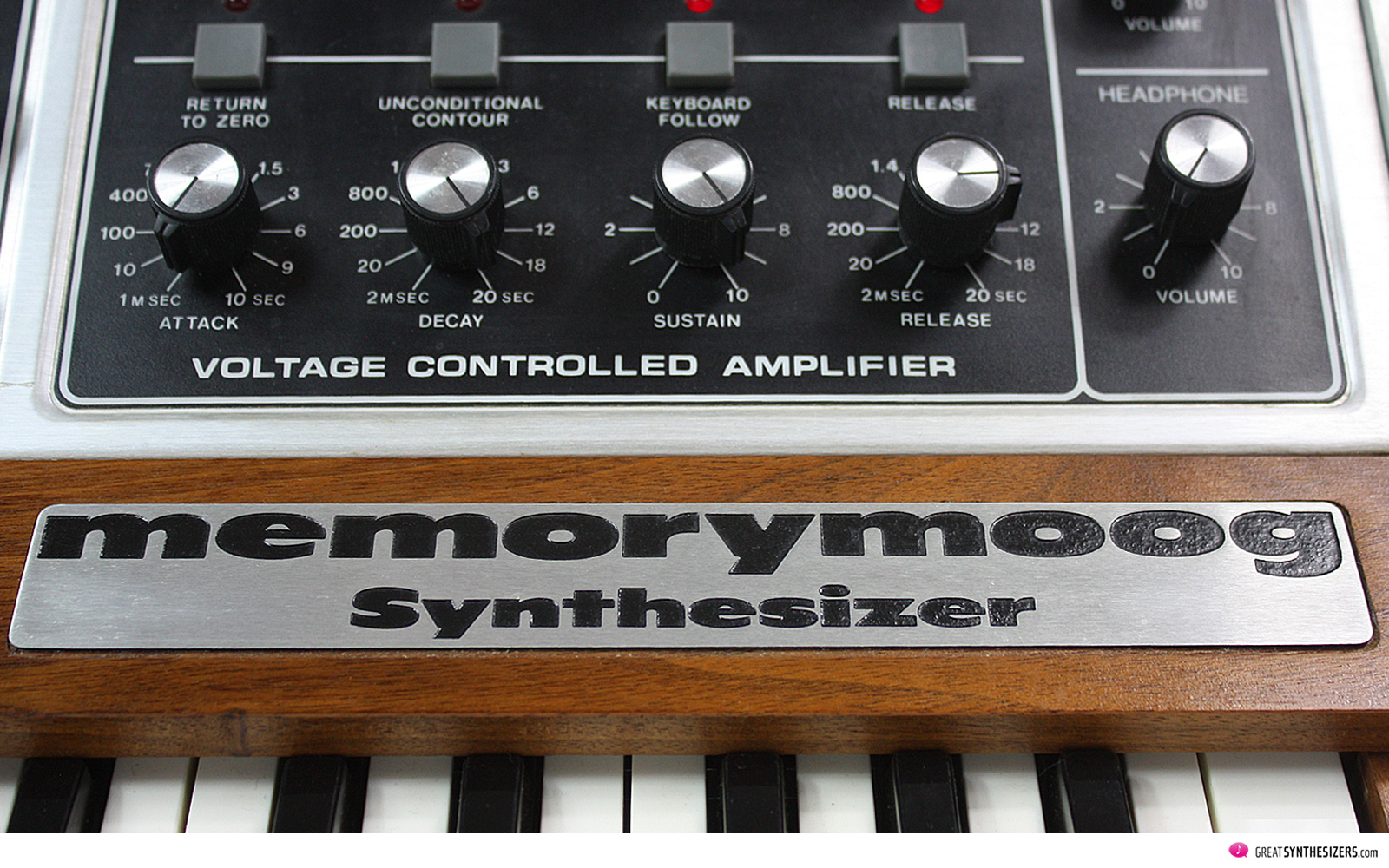





I designed that monster!
Dear Mr. Walborn … many thanks for the hint. What a great job you have done! I will add the appropriate info to the Memorymoog review. Kind regards – Theo B.
Lovely trip down Memory lane.
I had the pleasure of using one of these monsters for my day job with a “top rock-pop-techno band” in the 90’s for about five years. I got used to hitting the autotune button when there was a spare ten seconds mid song. Careful monitoring was crucial to an harmonious integration.
It was the only synth that could compete live with my cohorts live, who also made a lot of noise. A heavyweight that had the long suffering out front sound engineer riding the fader to save to sound system (sorry Mr.Phil). I rather enjoyed the headphone socket to audition my next assult into random on-the-fly psychedelic sound design.
My overiding memory was of a synth that was truly alive. Sadly the mighty MemoryMoog wasn’t mine, so these days I play the Cherry Audio Memorymode and remember……arrrrr.